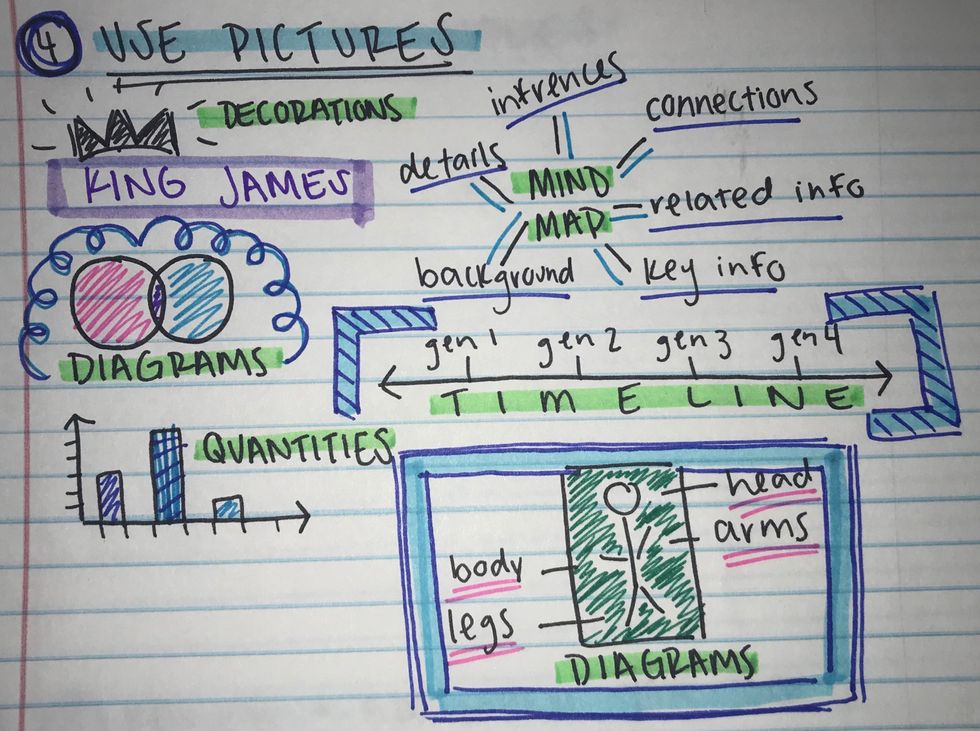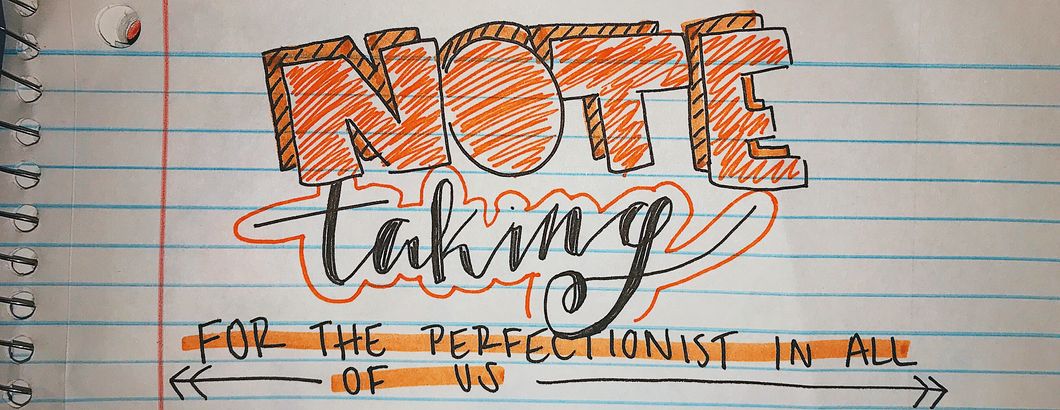Note taking has forever been a passion of mine. I am the girl with the glitter pencil pouch of millions of colored pens and highlighters developing early onset carpel tunnel at my desk. My planner is my best friend, and I love working to plan and color code all my assignments, responsibilities, and notes. School supply shopping is one of my favorite days of the year, and I almost always have colored ink somewhere on my hands.
Throughout high school, my note-taking method helped me to easily review and study, and this practice has helped me stay organized at the University of Georgia this semester. I work at my note taking to help me study later and be able to quickly navigate through lectures and semesters worth of material. Invest in some felt pens, and whip out a note pad.
1. Color Coding!

personal photo
I personally enjoy using a big pack of highlighters to organize my thoughts and notes. This allows me to quickly skim through looking for yellow highlighter, so I can be sure to quickly grab the important info. I use orange to outline headings, so it's easier for me to look for topics I need to study more. For classes like history, and literature, I use purple to keep up with characters, so I can study them at once. I make quizlets of all pink words and look for green highlighter to see an example of something that doesn't make sense. This system works for me because I can scan for exactly what I need to find.
2. Use Headings!

personal photo
For new chapters, headings, titles, lecture topics, etc, I looking making a decorative heading to quickly find the start of whatever I'm learning about. I make these big, and keep a space before adding information. These help to break up big lectures into small pieces to study later when focusing non-big ideas.
3. Use Typography!

personal photo
Use different fonts to draw attention to different information. I use cursive for keywords and all capitals for examples and vocabulary words. I decorate headings and subheadings differently. I use brackets and highlighting and colors to separate notes.
4. Use Pictures!

personal photo
Draw graphs. Sketch out diagrams. Make timelines. Add doodles to words and phrases. When you're going through your notes later these will help you find everything quickly and efficiently. Using graphics helps you visualize the information and remember it better during tests. Outline, box it, border it, make these images stand out when reviewing.
5. Outline!

Contrast the heading and subheading. Use color coordinating bullet points and arrows and dropdowns as you go more into detail about the first note. This lets you see the breakdown of each idea rather than a list of information. This also helps you to prioritize information when reviewing bigger ideas and going over smaller details. Categorize these bullets with brackets and lists and arrows!
6. Sticky Notes!
Use sticky notes to make short summaries of lectures per chapter or per concept. I also like to color code my sticky notes depending on what information they're displaying. Use these notes to add textbook information or points from other sources to your lecture notes. Add personal experiences that will help you remember the information better. You'll use acronyms and songs and sayings to remember info and make a note of these tricks.
7. Invest in Supplies!

I LOVE using highlighters that include the broadest spectrum for maximum color coding opportunities. I prefer using highlighters that include the purple and green which are not always as common. I also use different shades of the same color and a wide assortment of rainbow shades. Be sure to have the basics and assign colors to each topic, class, type of note, etc. Use pens that make your handwriting look good, so you'll want to use them more and enjoy them.
8. Review and Add When You Do!

When you go over information, draw arrows to ideas that connect to each other. Write in the margins when you get extra information or to put summaries. Add doodles to help you go over the information. Reread your notes and highlights important info, underline key terms, and put context out to the side.
Note taking is different for everyone. Everyone uses different strategies that work best for them. Here are my tips and tricks as to how I like to work and study!

















